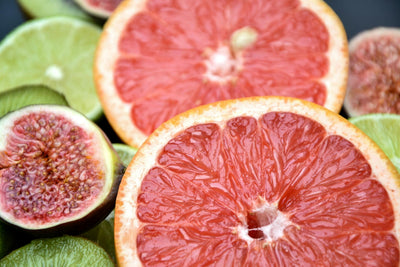Importance of Refrigerator Temperature
Why Setting the Right Temperature is Crucial
Maintaining the correct temperature in your refrigerator is essential for several reasons. It's the key to preserving the freshness of your food, ensuring it remains safe to eat, and extends the shelf life of perishable items. The right temperature slows the growth of harmful bacteria, which can proliferate quickly at warmer temperatures, leading to foodborne illnesses. Furthermore, precise temperature settings help your refrigerator operate more efficiently, potentially saving on energy costs and reducing your environmental footprint.
Impact of Temperature on Food Freshness
The temperature inside your refrigerator has a direct impact on the quality and longevity of your food. Perishable food items, such as dairy products, meat, fish, and many fruits and vegetables, require specific temperature ranges to maintain their freshness. For instance, the shelf life of dairy items can be substantially reduced if the refrigerator is too warm, while vegetables may wilt or freeze if the temperature is too low. Keeping your refrigerator within the optimal temperature range ensures that foods retain their texture, flavor, and nutritional value for as long as possible.
For more insights into the shelf life of specific items within your refrigerator, such as how long you can store cooked chicken or the best ways to preserve dairy products, explore our comprehensive guides:
- How long should you keep cooked chicken in the fridge
- Uncover the mystery: how long does cheese really last in the fridge
- Efficient storage secrets: maximizing the lifespan of rice in the fridge
By understanding and managing your refrigerator's temperature effectively, you can ensure that your food remains as fresh as possible, while also being mindful of energy consumption.
Ideal Refrigerator Temperature Range
Understanding the ideal temperature range for your refrigerator is key to ensuring that your food remains fresh and safe to consume. The right temperature not only helps to maintain the quality of your food but also prevents the growth of harmful bacteria.
Recommended Temperature Settings
The U.S. Food and Drug Administration (FDA) recommends keeping your refrigerator at or below 40°F (4°C). The freezer section should be at 0°F (-18°C). These temperatures are considered safe for food storage and can help you maintain freshness for a longer period.
| Section | Ideal Temperature |
|---|---|
| Refrigerator | ≤ 40°F (4°C) |
| Freezer | 0°F (-18°C) |
Consistently maintaining these temperature settings is the key to setting the right refrigerator temperature to maintain freshness. Any fluctuations above these temperatures can lead to increased risk of food spoilage and waste.
Adjusting for Different Sections of the Fridge
Your refrigerator likely has multiple compartments designed for different types of food storage. Each section may require specific temperature settings to optimize freshness and extend the shelf life of your items. For instance, the crisper drawer is often a bit higher in humidity and temperature to preserve the quality of fruits and vegetables.
Here are some general guidelines for different sections:
- Main shelves: Keep at the recommended 40°F (4°C) for items like dairy, leftovers, and drinks.
- Crisper drawers: Slightly above 40°F (4°C) for fruits and vegetables.
- Deli/meat drawer: Slightly below 40°F (4°C) for cold cuts and raw meats.
- Door shelves: Slightly above 40°F (4°C) for condiments and less perishable items.
When organizing your fridge, ensure that you're placing items in their appropriate sections to take full advantage of these specialized compartments. Adjusting your refrigerator settings according to these sections can help you better maintain the freshness of different food groups.
If you're curious about how long certain items last in your fridge, such as eggs or cooked meats, you can refer to how long do eggs last in the fridge or how long can you keep cooked shrimp in the refrigerator for more detailed information. Remember, maintaining the ideal temperature is critical for food safety and can help you reduce food waste.
Storing Food Correctly
The way you store food in your refrigerator can significantly impact its longevity and freshness. Understanding the proper placement for different food items and organizing your fridge efficiently are key steps in maintaining freshness.
Proper Placement of Different Food Items
Different sections of the refrigerator offer varying temperatures and conditions that are suitable for certain types of food:
- Upper Shelves: These areas typically have the most consistent temperatures and are ideal for leftovers, drinks, and ready-to-eat foods like yogurt and cheese.
- Lower Shelves: The coldest part of the fridge, perfect for storing raw ingredients that require a cooler environment, such as meat and fish. Ensure these items are well wrapped or in sealed containers to prevent cross-contamination.
- Crisper Drawers: Designed to hold fruits and vegetables, these drawers often have humidity controls to keep produce fresh for longer periods. Separate fruits and vegetables to prevent ethylene gas produced by fruits from ripening vegetables too quickly.
- Doors: The warmest part of the fridge, suitable for condiments, juices, and other items that don't require very cold temperatures.
Here is a table summarizing the ideal placement of food items in your refrigerator:
| Food Type | Recommended Location |
|---|---|
| Dairy Products | Upper Shelves |
| Leftovers | Upper Shelves |
| Raw Meat, Fish, Poultry | Lower Shelves |
| Fruits | Crisper Drawer |
| Vegetables | Crisper Drawer |
| Condiments | Door Shelves |
| Drinks | Door Shelves or Upper Shelves |
Tips for Organizing Your Fridge
- Label and Date: Use labels and dates on containers to keep track of when food was stored and its expected shelf life. For instance, you might want to reference our article on how long do eggs last in the fridge for specifics on eggs' storage duration.
- Use Clear Containers: Opt for clear storage containers to easily identify what's inside without needing to open them, reducing the time the fridge door stays open.
- Keep it Clean: Regularly clean shelves and drawers to prevent bacteria growth and odors.
- Group Similar Items: Place similar items together, like all your dairy on one shelf and condiments in one door rack, to find things quickly and efficiently.
- Don't Overpack: Ensure there's enough space between items for air to circulate, keeping everything cool and maintaining proper temperature throughout.
- Check Regularly: Periodically check for expired or spoiling items, and remove them to prevent them from affecting other foods.
For more extensive guidance on organizing your fridge, check out our comprehensive guide to organizing your fridge.
Implementing these practices will not only help maintain the freshness of your food but also save you time and reduce waste. Properly storing food can extend its life and keep your refrigerator running efficiently, making the best use of the space and the energy consumed. Remember, the key to setting the right refrigerator temperature is just the first step; how you store your food plays a significant role in preserving its quality.
Monitoring and Maintaining Temperature
Maintaining the right temperature in your refrigerator is paramount to ensure food stays fresh and safe to consume. Regular monitoring can help you keep the temperature within the ideal range and prevent spoilage.
Using Thermometers in the Fridge
One reliable way to check the accuracy of your fridge's temperature is by using a refrigerator thermometer. This device helps you track the actual temperature inside your fridge, which can sometimes differ from the reading on the fridge's built-in thermostat.
Place the thermometer in the middle of the refrigerator compartment to get a general reading, and consider placing additional thermometers near the door and at the back to detect any variations. Check the thermometer regularly, ideally daily, to ensure the temperature remains consistent.
| Location | Temperature (°F) |
|---|---|
| Middle of the Fridge | 37 |
| Near the Door | 40 |
| At the Back | 35 |
How to Check and Adjust Temperature
To check the temperature, simply look at the reading on the thermometer and compare it to the recommended temperature range for refrigerators, which is usually between 34°F and 40°F. If the temperature is outside this range, you'll need to adjust the settings.
Adjusting the temperature on your refrigerator can usually be done by:
- Locating the temperature control dial or digital keypad.
- Setting the dial to the middle setting or using the keypad to enter the desired temperature.
- Allowing the refrigerator to adjust, which can take up to 24 hours.
- Rechecking the temperature and making further adjustments if necessary.
Remember, your fridge may require different settings based on factors such as room temperature, how often you open the door, and the amount of food stored. For tips on efficient organization that can help maintain the right temperature, read unlocking fridge bliss: the ultimate guide to organizing your fridge.
Regular maintenance, like cleaning the coils and ensuring the door seals are tight, can also affect temperature stability. By diligently monitoring and maintaining your refrigerator's temperature, you can maintain freshness and keep your food safe.
Energy Efficiency and Temperature
Impact of Temperature on Energy Consumption
Your refrigerator is one of the most energy-intensive appliances in your home, continuously running to keep your food fresh. The temperature setting plays a significant role in its energy consumption. Setting the temperature lower than necessary can lead to unnecessary energy use and higher utility bills. Conversely, a temperature that's too high may not adequately preserve your food, leading to waste.
The U.S. Department of Energy recommends keeping the refrigerator temperature at or below 40°F and the freezer at 0°F for optimal efficiency and food safety. Maintaining these temperatures ensures that your refrigerator runs efficiently without overworking the cooling system.
Tips for Optimizing Energy Efficiency
To maintain freshness while also conserving energy, consider the following tips:
- Check Seals Regularly: Ensure that the door seals are airtight. If not, cold air can escape, causing the refrigerator to work harder.
- Allow Hot Foods to Cool: Before placing hot items in the fridge, allow them to cool down. This prevents the appliance from working extra to regulate its internal temperature.
- Defrost Manual-Defrost Models: If your refrigerator requires manual defrosting, do not allow more than a quarter-inch of frost to build up.
- Keep It Full: A full refrigerator retains cold better than an empty one. If it's looking bare, store water jugs to help maintain low temperatures.
- Regular Maintenance: Clean the coils behind or beneath the refrigerator to ensure efficient operation.
- Avoid Side-by-Side Models: If you're in the market for a new fridge, consider models with the freezer on top or bottom rather than side-by-side units, which tend to be less energy-efficient.
By implementing these strategies, you can ensure that your refrigerator runs more efficiently, saving energy and reducing costs. For further tips on food storage and preserving freshness, explore articles such as the ultimate guide on how long curry stays fresh in the fridge and how to correctly store cooked shrimp. Moreover, if you're considering a new appliance, our guides on selecting the ideal french door fridge and exploring the best refrigerator with top freezer may help you make an informed decision.
Common Refrigerator Temperature Mistakes
Maintaining the right temperature in your refrigerator is essential to ensure food safety and prevent spoilage. However, there are common mistakes that you might make when setting and maintaining the refrigerator temperature. Understanding these errors can help you avoid them and keep your food fresh for longer.
Overcooling vs. Undercooling
Overcooling occurs when the refrigerator temperature is set too low, causing food to freeze unnecessarily. This can affect the texture and taste of refrigerated items, such as fruits and vegetables, and may lead to increased energy consumption. Conversely, undercooling is when the temperature is set too high, which can accelerate the growth of harmful bacteria and spoil food quickly.
The following table provides a visual summary of the potential risks associated with incorrect temperature settings:
| Temperature Mistake | Potential Risks |
|---|---|
| Overcooling | Freezing of food, increased energy costs, altered food texture |
| Undercooling | Bacterial growth, faster food spoilage, health risks |
To avoid these mistakes, it is advised to set your refrigerator to the recommended temperature range of 37°F to 40°F (3°C to 4°C). For more information on the ideal settings for different foods, you may want to read about cracking the code on how long eggs last in the fridge.
Effects of Fluctuating Temperatures
Fluctuating temperatures can be just as harmful as incorrect settings. If the temperature in your refrigerator is not stable, it can lead to a series of issues that compromise the quality and safety of your food. For example, frequent changes in temperature can cause condensation inside packaging, which may lead to mold growth and off-flavors.
Here are the key effects of fluctuating temperatures in a refrigerator:
- Increased risk of foodborne illnesses due to inconsistent refrigeration.
- Shortened shelf life for perishable items.
- Possible nutrient degradation in certain foods.
To help maintain a consistent temperature, avoid opening the refrigerator door too frequently and ensure that it is properly sealed. Additionally, use a refrigerator thermometer to monitor the temperature and make necessary adjustments. This will help you keep the temperature steady and your food safe to eat.
Maintaining the correct temperature in your refrigerator is a balance between preventing overcooling and undercooling, as well as avoiding fluctuations that can lead to spoilage. By being mindful of these common mistakes and taking proactive steps to regulate the temperature, you can ensure that your food remains fresh and safe for consumption. If you're interested in learning more about organizing your fridge to maintain an optimal temperature, check out unlocking fridge bliss: the ultimate guide to organizing your fridge.
Troubleshooting Temperature Issues
When you notice that your foods are not being kept at the desired level of freshness, it may be an indication that your refrigerator's temperature settings need attention. Here are ways to address discrepancies and determine when professional assistance might be necessary.
Addressing Temperature Discrepancies
If you detect a discrepancy between the set temperature and the actual temperature inside your refrigerator, it's time to take action. The first step is to confirm the actual temperature using a reliable thermometer. Place the thermometer in the center of the refrigerator, away from any produce, and wait for a stable reading. If the temperature is off, here's what you can do:
- Reset the Temperature Controls: Sometimes, simply resetting the controls to the recommended settings can fix the issue.
- Check for Blocked Vents: Ensure that nothing is blocking the air vents inside the fridge, as this can disrupt the flow of cold air.
- Inspect the Door Seals: Look for any signs of wear or damage in the door seals which could be letting warm air into the unit.
- Consider the Frequency of Door Opening: If the door is opened too often, it could be letting in warm air and affecting the internal temperature.
- Defrost if Necessary: If your refrigerator is not frost-free, a buildup of ice could be impacting the temperature. Follow the manufacturer's guidelines to defrost.
- Rearrange Your Food: Food items should not be packed too tightly as it can restrict air circulation. Ensure proper organization using our guide on unlocking fridge bliss the ultimate guide to organizing your fridge.
When to Seek Professional Help
While many temperature issues can be resolved with simple adjustments, there are times when you might need to call in the experts:
- Persistent Temperature Fluctuations: If the temperature in your fridge continues to fluctuate after you've made all possible adjustments, it could be a sign of a malfunctioning thermostat or sensor.
- Motor Running Constantly: A fridge that's working overtime and not shutting off could be struggling to maintain the right temperature.
- Frost Buildup in Frost-Free Models: If you're noticing frost in a frost-free refrigerator, it could indicate a problem with the defrost system.
- Unusual Noises: Strange sounds coming from the fridge could be a sign of a failing compressor or fan.
In these situations, it is wise to consult with a certified appliance repair technician who can diagnose and remedy the issue. Remember, maintaining the correct temperature is not only about keeping food fresh but also about ensuring food safety and maximizing energy efficiency. If you're experiencing ongoing issues, do not hesitate to seek professional assistance to get your refrigerator back to its optimal condition.
Get Your Upgrade or New Addition at Fridge.com
Whether you're searching for your perfect fridge, freezer, wine fridge, beer fridge, ice maker, or kegerator, we have what you need.
Shop the world's best brands at Fridge.com.
We also have tons of awesome articles about kitchen stuff and home news. Enhance your home, garage, backyard, patio, and office with the coolest essentials. With every necessary type of residential refrigerator or freezer in our collection, we've got you covered.
Elevate your game and shop now at Fridge.com!






